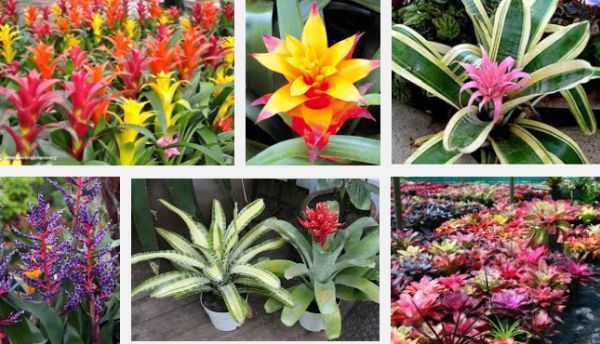In Sam Chism’s personal reflection on bromeliads, he said, bromeliads are one of the best kept secrets in the plant world. They are diverse, fascinating, and relatively easy to grow.

Bromeliads are tropical plants native to the Americas. Its fleshy leaves form a funnel that holds water. They look quite different from traditional plants that is why a lot of people consider them exotic. They grow in diverse places like rain forests, deserts and coastal areas. There are two types of bromeliads according to Dr. Ben Vergara, a bromeliad grower in the Philippines. These are the bromeliads with colorful foliage and the bromeliads with flowers. The foliage-type grows relatively slow but according to him, they have higher selling price compared to the flowering-type. Meanwhile, the flowering bromeliads grow faster and have wider use. The more flowers they have, the higher the selling price. Among the flowering bromeliads that are popular in the market are the guzmania, vriesea, tillandsia and aechmea.
Due to the peculiarity of bromeliads, a lot of people think they are difficult to grow. As a result, bromeliads have not caught the attention of plant collectors as much as other exotic plants.
Bromeliads are shade-and cool-loving plants. Shading them with fish net is recommended to minimize the intensity of the sun and to control the temperature. Low temperatures help the plant produce more colorful flowers and give it a waxy appearance. For potting purposes, growers may use a wide range of materials. Coir dust is a favorite among growers due to its availability and low cost, and has been proven to inhibit weed growth.
To support plant growth, these bromeliads need to be nourished with fertilizers. The usual fertilizers are osmocote, multicote and nutricote, which are readily available in the market. These fertilizers are a bit more expensive than the complete fertilizer most growers use. The frequency of application depends on the fertilizer being applied and may be as frequent as once every three months or only once during the lifetime of the plant.
One of the advantages of growing bromeliads is that it has very few pests. The most serious are “mealy bugs” which can be easily eliminated by spraying Sevin. Other pests include plant hoppers, snails and caterpillars. Meanwhile, the most common disease is rotting, although maintaining the water level and removing infected plant parts can prevent this.
Just like any plant, scientists have extensively hybridized the bromeliads resulting to various cultivars with more colorful and improved traits. Newly discovered or hybrid plants often sell to collectors and plant enthusiasts for a big sum. Many of these new hybridized bromeliads resulted to more striking plants with both bloom and foliage. These new plants offer more colors and shades than any other plant. According to Dr. Vergara, orange and red and their combinations are the most common and most saleable hybrid of the bromeliads, although the yellow hybrid is also highly in demand. The whitish green hybrid is locally available while those with purple and maroon bracts are the least saleable variants.
———————————–
Source:
“Growing bromeliads in Laguna and Quezon by Ben Vergara; a paper presented during the 6th Philippine Floriculture Congress, September 6-8, 2001 and http://www.ghg.net/beyer/bromel.htm)
By: Rita T. dela Cruz, BAR Digest, October-December 2001 Issue (Vol. 3 No. 4)

